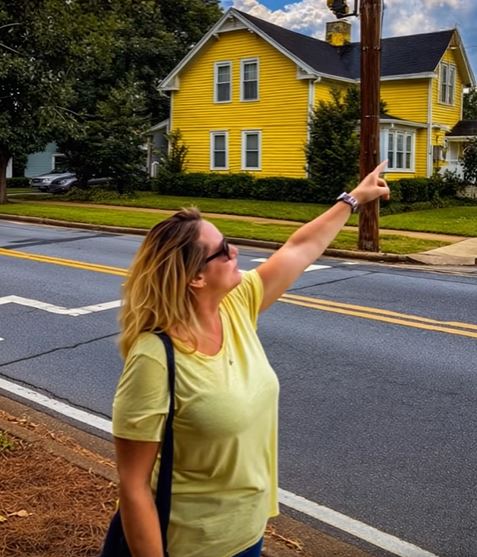Returning home from a two-week vacation should be a relaxing experience, a gentle transition back into the rhythm of daily life. For Victoria, it was a moment of profound shock. As she turned onto her street, the familiar sight that always warmed her heart—her cheerful, bright yellow house—was gone. In its place stood a structure painted a dull, impersonal gray. The color was more than just paint; it was a living memory of her late husband, who had lovingly chosen that specific shade of sunshine yellow years earlier. The sight of it had always felt like a hug from the past, and in an instant, it had been erased.
Victoria knew immediately who was responsible. Her neighbors, the Davises, had never been shy about their disdain for her home’s color, frequently labeling it an “eyesore” that clashed with the more muted tones of the neighborhood. With a sinking feeling, she began her investigation. A conversation with a nearby witness confirmed her worst suspicions. The Davises had not only hired a painting crew but had actively impersonated her, presenting a forged work order and paying in cash to avoid a paper trail. The audacity of the deception was staggering.
Driven by a mix of grief and fury, Victoria took swift action. She contacted the painting company directly and, after explaining the situation, secured copies of the fraudulent work order and the company’s own records, which detailed the cash payment from the Davises. The evidence was undeniable. Rather than simply repainting the house herself, Victoria decided this violation required a formal response. She filed a lawsuit, determined to hold her neighbors accountable not just for the vandalism, but for the profound disrespect they had shown to her family’s memory.
The day in court was a revealing one. The painters testified under oath, confirming that the Davises had explicitly claimed to be the homeowners and had insisted on skipping crucial preparatory steps to cut costs, resulting in a shoddy job where the original yellow bled through the thin gray coat. The judge listened intently to the evidence of fraud and property damage. The ruling was a complete victory for Victoria. The court ordered the Davises to pay all legal fees and to hire professionals to restore the house to its original bright yellow. As a further penalty, they were sentenced to community service.
Outside the courthouse, a frustrated Mrs. Davis muttered under her breath, but Victoria simply felt a wave of quiet relief. The victory wasn’t just about the money or the paint; it was about principle. Her home, a testament to her husband’s love, would soon shine brightly again. The entire ordeal served as a powerful lesson to the community that personal property is sacred and that no one has the right to impose their own aesthetic tastes on another’s home, proving that some boundaries, like a fresh coat of yellow paint, are worth defending.
